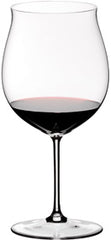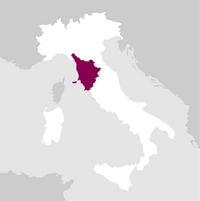Awards
Details

Perfume

Color

Taste
Serve at:
18 - 20 °C.
Longevity:
15 - 25 years
Decanting time:
1 hour

Pairings
- Start up year: 1985
- Oenologist: Attilio Pagli
- Bottles produced: 10.000
- Hectares: 4
The different geological nature of soils corresponds to as many expressive variables in grapes matured. The consolidated relationship between Giulio and Attilio Pagli, company winemaker, guarantees continuity in the quality of production: "If the Brunello does not deserve, I only make Red"; So Julius clearly expresses, revealing an almost maniacal attention to the quality of the grapes. Moreover, it is only from perfectly matured grapes that it is possible to produce a great wine, capable of achieving excellence in every year of its marketing.
The balance and the perfect balance of wines comes from a rare mixture of freshness (we are 420 at sea level), exposure to the morning sun (southeast), clayey matrix and plant density not exaggerated to allow Plants have plenty of space available, favoring air circulation.
Read more


| Name | Salvioni La Cerbaiola Brunello di Montalcino 2020 |
|---|---|
| Type | Red still |
| Denomination | Brunello di Montalcino DOCG |
| Vintage | 2020 |
| Size | 0,75 l |
| Alcohol content | 15.0% by volume |
| Grape varieties | 100% Sangiovese Grosso |
| Country | Italy |
| Region | Tuscany |
| Vendor | Salvioni - La Cerbaiola |
| Origin | Montalcino (SI) |
| Climate | Altitude: 420-440 m. a.s.l. |
| Soil composition | Galestroso soil. |
| Cultivation system | Single spurred cordon in younger plantings and double spurred cordon where the distance between plants is greater. |
| Plants per hectare | 3000 |
| Yield per hectare | 25-40 q. |
| Wine making | Vinification takes place in the estate's cellar next to the vines in 40/35 hectolitre stainless steel vats and usually lasts 28/30 days depending on the vintage. Fermentation takes place spontaneously in the days following the harvest in rooms that do not have air conditioning, which means that the high temperatures need to be regulated with frequent pumping over throughout the day and often with délestage, which allows the wine boiling in other tanks to cool down. |
| Aging | After racking, the clean wine remains in steel for a further few months during which it undergoes malolactic fermentation in the normal way, at the end of which it is put into casks. For maturing the wine, the company has always used large 18/22 hectolitre barrels of medium toasted Slavonian oak. Today the barrels are divided into two cellars: one directly on the estate where the older barrels are located and the other located in the historic centre of the village under the family house where the newer barrels are located and where tastings of the vintages are usually held with customers. |
| Allergens | Contains sulphites |







